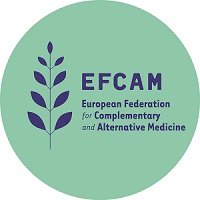“Everyone has the right to benefit from any measures enabling them to enjoy the highest possible standard of health attainable.”
(From the 1961 European Social Charter adopted by the Council of Europé, revised in 1996)
CAM’s particular strength is the combination of individualised holistic care, capacity to provide health maintenance, illness prevention and non invasive illness treatment as part of an integrated package. This is very attractive to users who report a high satisfaction rating.
• Between 20% and 80% of citizens in different EU countries have used CAM in their health care.They want to choose the therapeutic approach that they consider will produce the best result for their health, whether it is to maintain good health and to prevent illness, or to alleviate a health problem, and whether that belongs to conventional medicine or to CAM.
• Access to CAM, with rare exceptions, is limited to those who can afford to pay for it. Equitable access to healthcare, including CAM, and the sustainability of health services requires a shift towards health promotion and prevention of illness, and, towards more cost-effective treatment of illness. The CAM methods and CAM workforce are available to contribute to that.
• Across Europe there are in the order of 360,000 CAM practitioners practising a range of modalities such as acupuncture, aromatherapy, herbal medicine, kinesiology, naturopathy, massage, reflexology, shiatsu and TCM. They offer a whole person approach to health with a focus on supporting the person’s health-maintaining capacities and within which illness is treated according to the distinct diagnostic and treatment methods of the modalities used. This can be on a stand-alone basis and/or complementary to conventional medicine approaches. Currently CAM is mostly provided privately and in a small number of contexts in collaboration with conventional medical practitioners.
• As Europe faces a growing number of challenges in healthcare such as an aging population, chronic diseases, maintaining a healthy workforce, and rising healthcare budgets, it is time CAM is given serious consideration as both innovation and added value for healthcare in Europe.
• It is time to create a healthier system of healthcare that focuses in the first instance on health maintenance and prevention and then on treatment of illness, one in which CAM can be a major contributor.
The Council of Europe adopted a resolution on Non-conventional medicine in 1999: http://assembly.coe.int/Main.asp?link=/Documents/AdoptedText/ta99/ERES1206.htm
